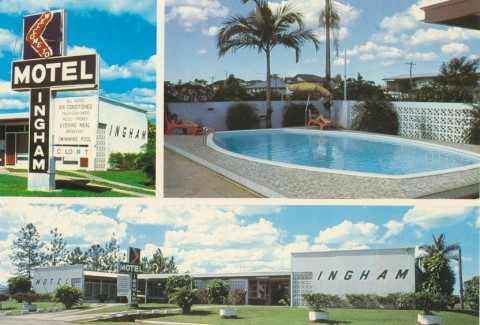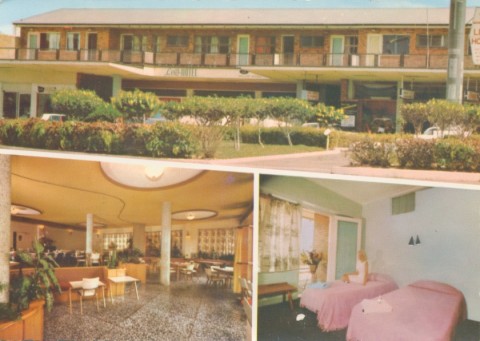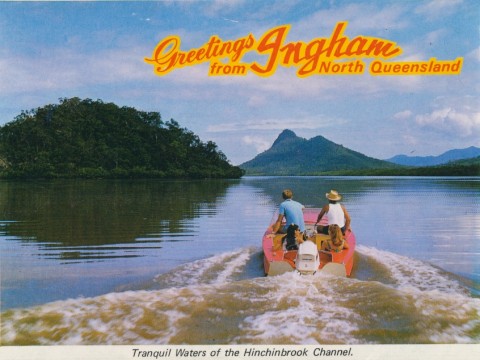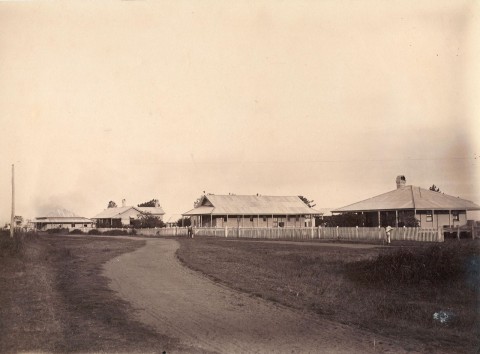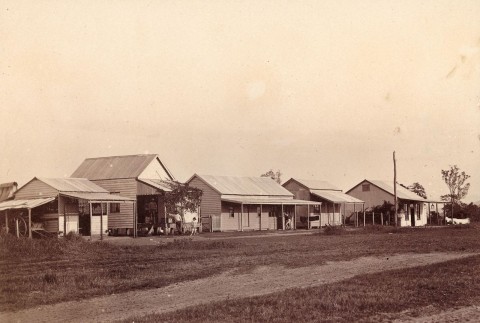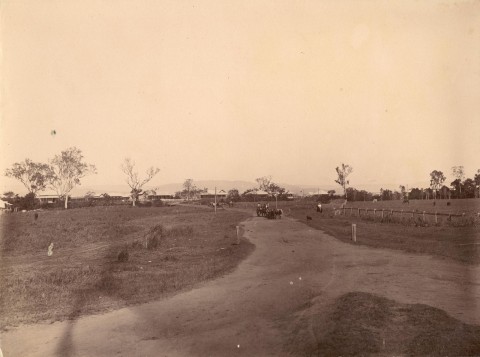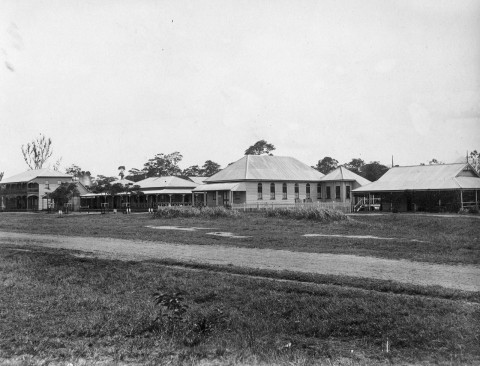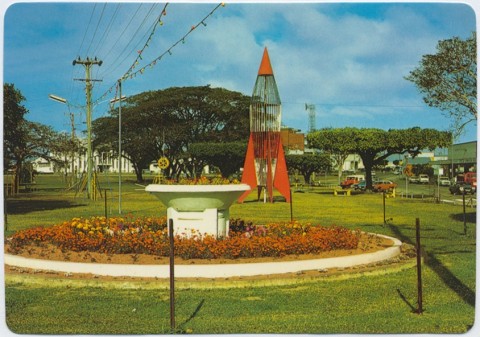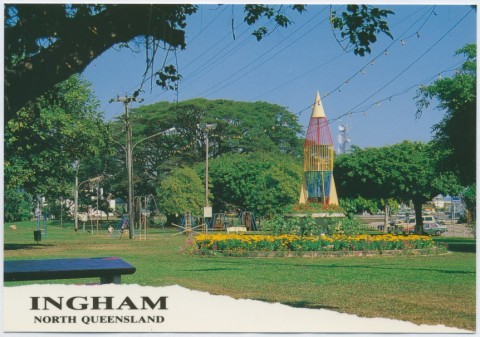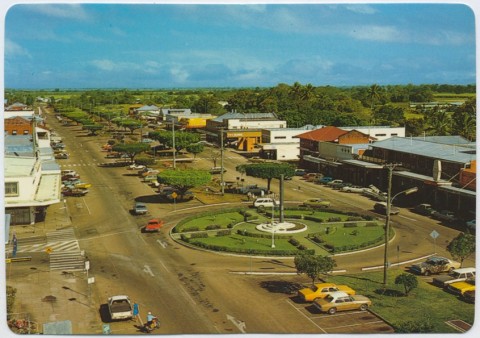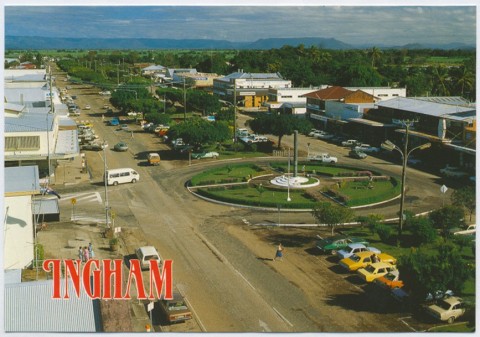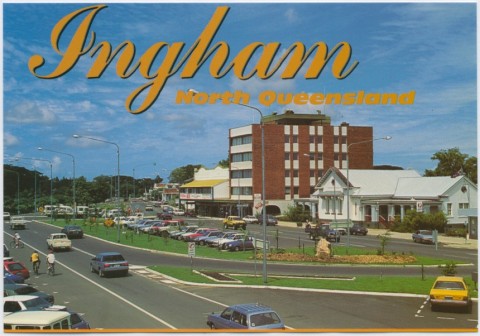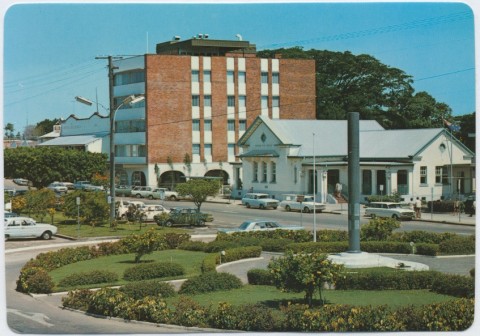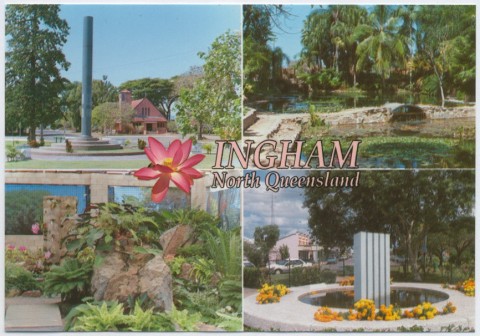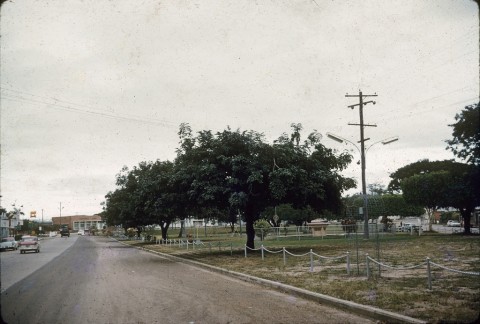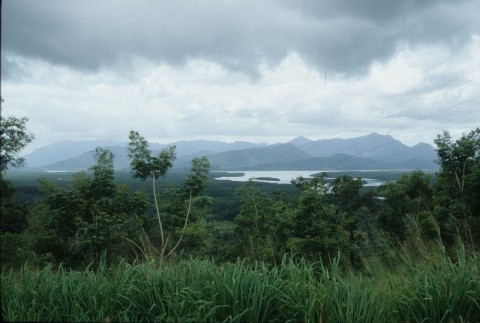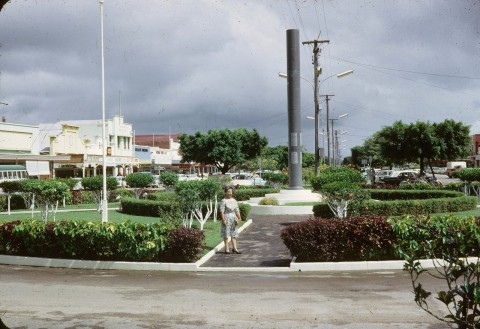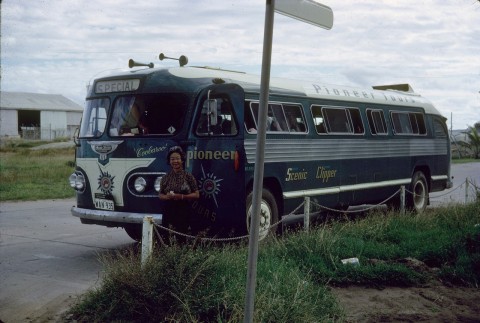Ingham, a riverside town, is 100 km north-west of Townsville. It is situated on Palm Creek, not far from where the creek joins the Herbert River. Set on a coastal plain, Ingham is downstream of the Herbert River Valley and about 25 km from the mouth of the Herbert. The plain is enclosed by steep ranges, through which the Herbert flows. Every decade or so, Ingham suffers major flooding, when the Herbert River peaks at over 12 metres, which it did in 1971, 1986, 1991 and 2009.
The mouth of the Herbert opens on to the Hinchinbrook Channel and, whilst James Cook noted the mountains on Hinchinbrook Island, he missed both the channel and the river mouth. Concealed by a maze of tidal creeks, the river mouth was unidentified by Europeans until George Dalrymple's expedition in 1864.
WILLIAM INGHAM
A sugar plantation was established on the Lower Herbert in 1870 but it lasted only a few seasons. William Ingham established a plantation and put a deposit on a mill, but he became disheartened in the mid-1870s at falling prices and rust disease. He sold up and went to New Guinea in 1877, where he was killed by natives.
By the time of Ingham's death the un-named settlement on the Lower Herbert had a store, two hotels and a post and telegraph office (a telegraph line had been installed between Townsville and Cardwell in 1869). William Ingham was well remembered, and he had been an explorer of the Lower Barron, Trinity Inlet and Port Douglas. As a mark of respect Ingham was chosen as the name for the Lower Herbert Settlement.
SUGAR
The Ingham township was surveyed in 1878 and allotments auctioned the following year. Several mills and plantations were established, among them the Victoria Mill, north-east of Ingham, which had its first crushing in 1883. In the early 1890s the Queensland Government arranged the recruitment of northern Italian settlers as an answer to the withdrawal of indentured South Sea Islands labour. Although opposed by trade unions and other interests, the Italians were generally welcomed by Ingham planters - albeit with the prospect of cheap labour at the back of their minds. Nevertheless, the Government's policy included the breaking up of large sugar estates into family owned farms, and this opened up an opportunity for Italian settlers.
Between 1892 and 1902 the sugar plantations in the Herbert River district increased by 85% to 3600 ha. In addition to Italian settlement, Ingham began to attract miners moving from inland towns as labourers or to set up as small farmers. In 1903 Ingham was described in the Australian handbook:
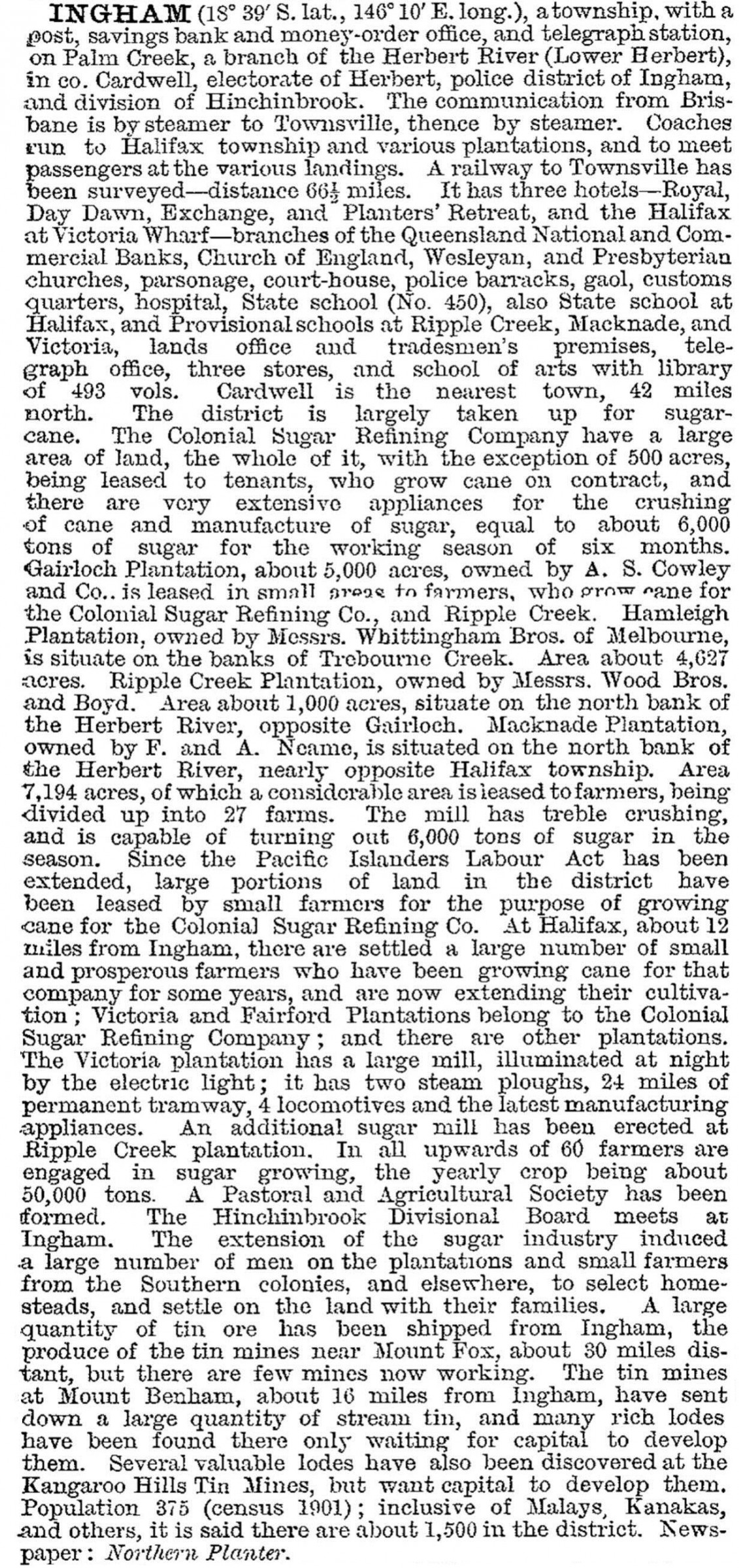
There were a pastoral and agricultural society, offices of the Hinchinbrook divisional board (1884) and the Northern Planter newspaper.
The Herbert River Valley was especially suited to sugar cane, and there were extensive uncleared scrub lands still available as late as the 1940s. The Victoria Mill would ultimately have the highest output of all Queensland's mills, and the Macknade Mill (1874) had a middle-ranking output.
GROWTH OF TOWN
In 1919 Ingham was connected by railway to Townsville. Between 1921-33 Ingham's population nearly trebled to 2690, despite a severe flood in 1927. There were also cattle grazing (to the west) and dairying. Tobacco growing began in the 1930s. Agriculture diversified, and the Catholic Church established an agriculture college at Abergowrie (the only one in north Queensland) in 1934. Vegetable crops were grown for southern winter markets. Canegrowers formed a Herbert River association, and there was also the Herbert River Farmers League. In Ingham itself there is a memorial garden named after Keith Payne VC (Vietnam). Payne was born in Ingham in 1933.
Before the opening of the railway, communication was by coastal boat, and Hinchinbrook, Orpheus and Palm Islands were mentioned as tourist destinations. A guest house on Orpheus Island took tourists from Ingham in the 1940s. Tourism, however, was of a minor key until the reservation of several national parks in the surrounding ranges. Two spectacular examples are the Jourama Falls national park (part of the Wet Tropics World Heritage area) and the Mount Spec national park, both to the south of Ingham. The Wallaman Falls national park, west of Ingham, has the largest single drop waterfall in Australia.
ITALIAN HERITAGE
Ingham's Italian heritage has become a tourist attraction, and the first Australian Italian Festival was held in 1995. It has been estimated that over half of Ingham's population has one or more Italian ancestors for, in addition to the initial influx in the 1890s, migration continued for several decades. The Italian community built its own hospital (1929-45), an exotic design with turrets at either end. (In 1946 Hinchinbrook Shire had 22.7% of Queensland's Italian-born citizens.) Between festivals, the Italian cemetery is listed as a significant point of interest for tourists.
Ingham is the administrative centre of Hinchinbrook Shire, and has golf, swimming, horseracing and other sporting venues. It also has an aerodrome, a showground, State primary and high schools (1885, 1952), Catholic primary (1915) and secondary (1949) schools, a TAFE, six churches, and a hospital. The postwar, modernist court house (1948) in Palm Terrace is listed on the Queensland heritage register.
CYCLONE YASI
On 3 February 2011 the Category 5 Cyclone Yasi crossed the Queensland coast, centred about 50 km north of Ingham. The main damage was to public utilities (electricity, sewerage disrupted), uprooted trees, fences and sheds. Some buildings lost panels and exposed sections. The highway and some low-lying areas were flooded.
Ingham's census populations have been:
| Census Date | Population |
|---|---|
| 1881 | 16 |
| 1901 | 373 |
| 1911 | 931 |
| 1933 | 2687 |
| 1954 | 3943 |
| 1966 | 5354 |
| 1976 | 5868 |
| 1991 | 5075 |
| 2001 | 4673 |
| 2006 | 4605 |
| 2011 | 4767 |
William Douglass, From Italy to Ingham, St Lucia, University of Queensland Press, 1995
Invitation to Ingham and the Herbert River Valley, Ingham, Rotary Club of Ingham, 1948
When Ingham was young, Sl, sn, 1964
